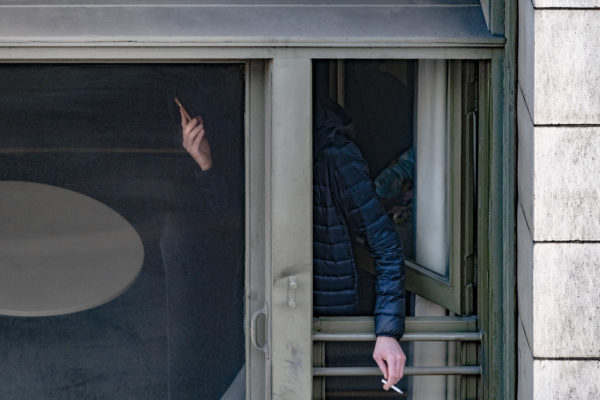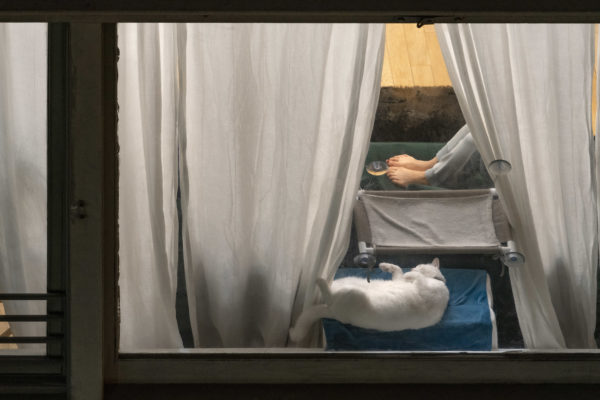Los Angeles Locked Down. Covid Came Anyway.
Bloomberg Opinion , December 30, 2020

My neighbors’ children haven’t seen the inside of a classroom since spring. The book I checked out from the UCLA library to research this March column is still in my bedroom, gathering dust. Not even the drop-off return box is open. We haven’t eaten inside a restaurant or entered a museum, library or theater since March. They’re all shut down. This isn’t New York, with its delightfully uncrowded museums.
Los Angeles has endured nine months of a shutdown more extreme than most of the country’s — or the world’s. In the beginning, the city even closed the parks. You still can’t enter the Venice Beach boardwalk except to pick up takeout food. No walks, bike rides or fishing on the pier.
One of the few positive side effects of the pandemic was the spread of outdoor dining. L.A.’s climate is ideal for it, but the city normally makes it a permitting nightmare. Covid changed that — temporarily. Now, despite legal challenges, sidewalks and patios are again bereft of tables. Only takeout is allowed.
As Covid patients overwhelm local hospitals, filling intensive care units and consuming so much oxygen that hospitals warn of shortages — oxygen shortages! — my home contradicts the simple narrative that coronavirus outbreaks are righteous punishment for red state disregard. You can adopt every stricture, follow every rule, and still wind up with a crisis. The virus is relentless — and still more mysterious than we like to admit. The lockdown is wearisome. For those whose livelihoods are now illegal, it’s a crisis in itself.
Although hair and nail salons did reopen for business in September, they’re again closed. Like many customers, my husband and I stayed away even during the brief reopening. We figured it couldn’t last. So my thumb sports a continual bandage, covering the permanently split nail formerly held together by a manicurist’s acrylic workmanship. My hair is the longest it has been since college, and my husband now sports a tiny ponytail. It keeps his hair looking normal on Zoom.

Undriven for nine months, his car has a dead battery and cobwebs on it. No more 50-mile commutes a couple of times a week to teach and see colleagues at UC Irvine. Instead, he has a multiscreen setup in the home office. His MBA students, weary from jobs filled with Zoom meetings, aren’t fully engaged. Some don’t even turn on their cameras.
My car, on the other hand, does get out, and not just to keep us supplied with food and toilet paper. Taking advantage of the Covid-induced reduction in L.A.’s infamous traffic, I’ve gone exploring, looking for backdrops to introduce videos inspired by my most recent book: a “Cannabis Before Prohibition” mural in Hollywood, a Uyghur restaurant in Alhambra, a cactus sculpture in West Hollywood.
It reminds me of my early years here, in the late 1980s, when the city was a new and wonderful place to get to know, and driving, rather than walking, was my primary form of transportation. Except for placing an order at that Uyghur restaurant, however, I don’t talk to anyone. This is 2020, and “social distance” is the rule.
From March to September, we paid the couple who cleans our house every four weeks to stay home. She went back to Guatemala, returning in the fall. In July, the virus swept through the household, probably brought home by one of the several young adult sons who share the two-bedroom apartment. No one was hospitalized, but it was a scare, and typical of the pandemic’s Los Angeles progress.
Latinos, who often live in crowded, multigenerational households and work in retail, health care, construction and other essential jobs, have been hit hard. The city’s map of Covid cases per 100,000 residents by neighborhood tells the story: Richer neighborhoods have lower caseloads, poorer ones, with more people packed in each household, have higher ones. Our West L.A. neighborhood falls in the middle.

Our pandemic experience hasn’t been that bad. My husband and I get along and like being together. With jobs we can do online and no kids to homeschool, we have it easy. Our three-bedroom condo gives us separate workspaces and room to spread out. I’ve turned our kitchen table into my own Zoom studio, complete with backdrop and lights for a 2020 book tour. I’d love to eat in a restaurant or travel cross country, but those are minor sacrifices compared with what many people are experiencing, even without getting sick.
Brendan Lott, an artist who lives in downtown L.A., evokes the melancholy and isolation of the pandemic in a series of photographs titled “Safer at Home,” the official name of the city’s restrictions. Shooting from his high-rise apartment’s windows, he captures unknown neighbors as they work, smoke, exercise and check their phones, using the buildings’ architecture to obscure identities and heighten the claustrophobia. Evocative on Instagram, at gallery size the photos are haunting and painterly.
Affluent and young, Lott’s subjects are hardly the pandemic’s greatest victims. But that thought makes the images even sadder.